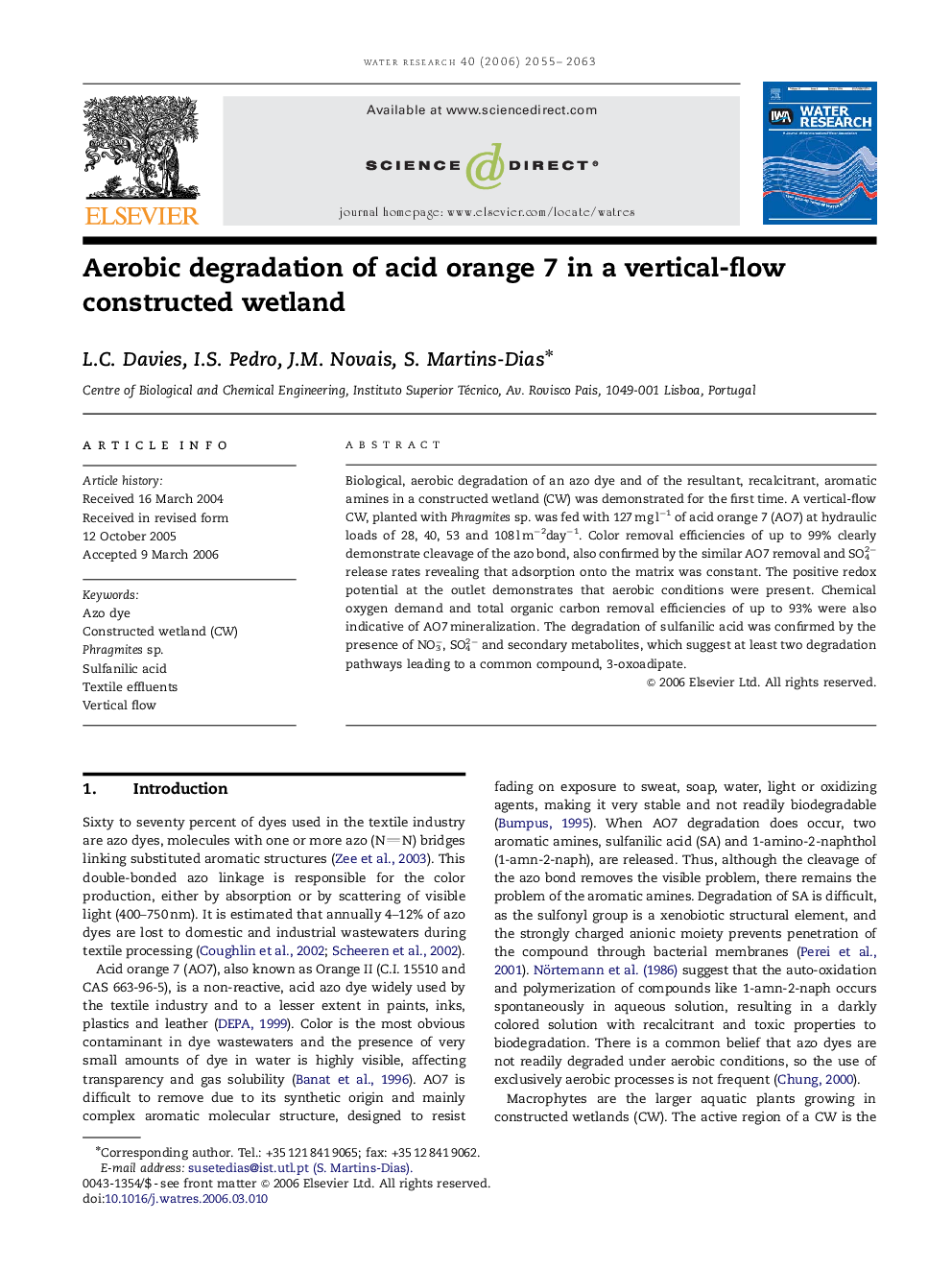| Article ID | Journal | Published Year | Pages | File Type |
|---|---|---|---|---|
| 4486237 | Water Research | 2006 | 9 Pages |
Biological, aerobic degradation of an azo dye and of the resultant, recalcitrant, aromatic amines in a constructed wetland (CW) was demonstrated for the first time. A vertical-flow CW, planted with Phragmites sp. was fed with 127 mg l−1 of acid orange 7 (AO7) at hydraulic loads of 28, 40, 53 and 108 l m−2day−1. Color removal efficiencies of up to 99% clearly demonstrate cleavage of the azo bond, also confirmed by the similar AO7 removal and SO42− release rates revealing that adsorption onto the matrix was constant. The positive redox potential at the outlet demonstrates that aerobic conditions were present. Chemical oxygen demand and total organic carbon removal efficiencies of up to 93% were also indicative of AO7 mineralization. The degradation of sulfanilic acid was confirmed by the presence of NO3−, SO42− and secondary metabolites, which suggest at least two degradation pathways leading to a common compound, 3-oxoadipate.
